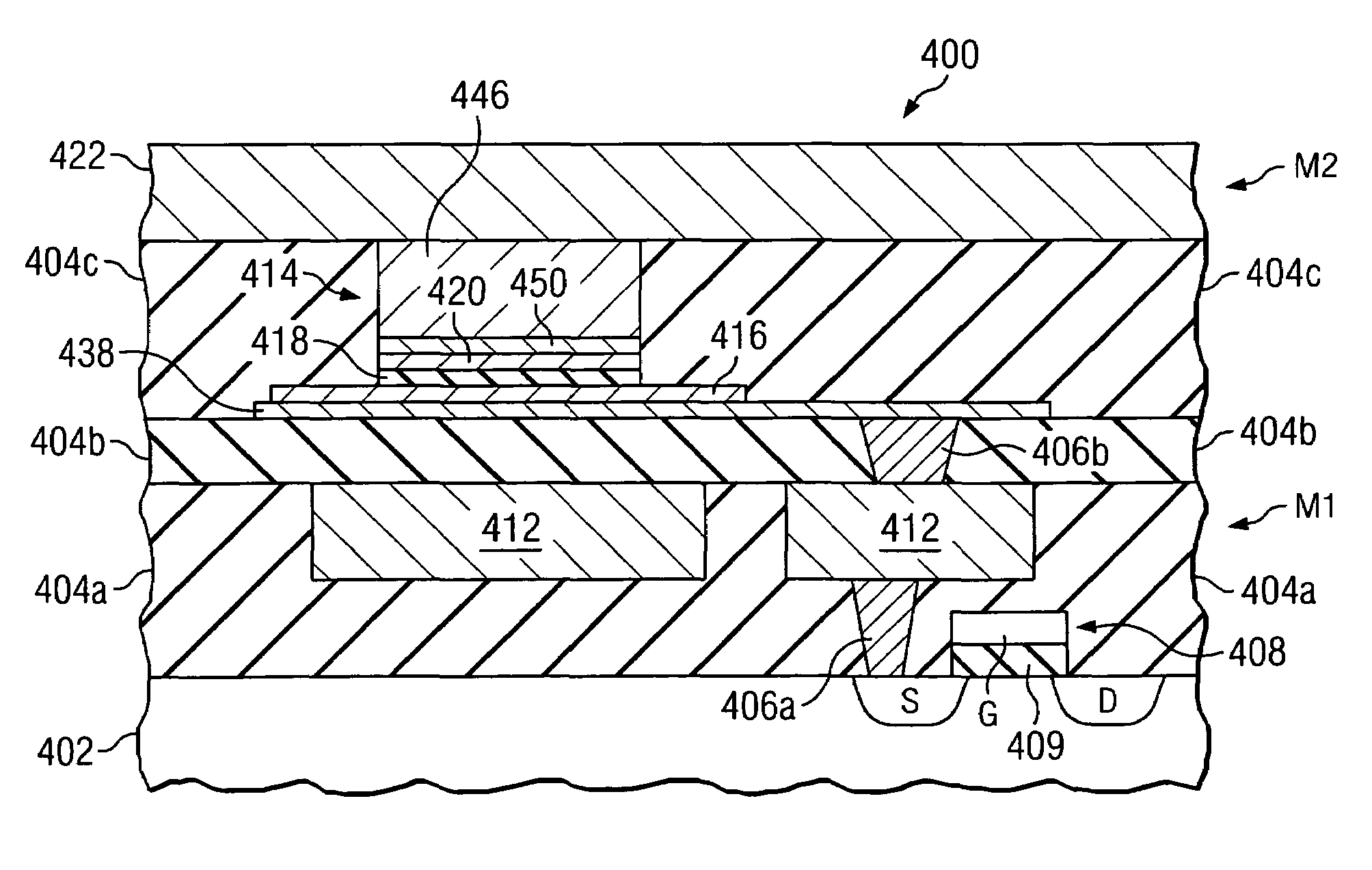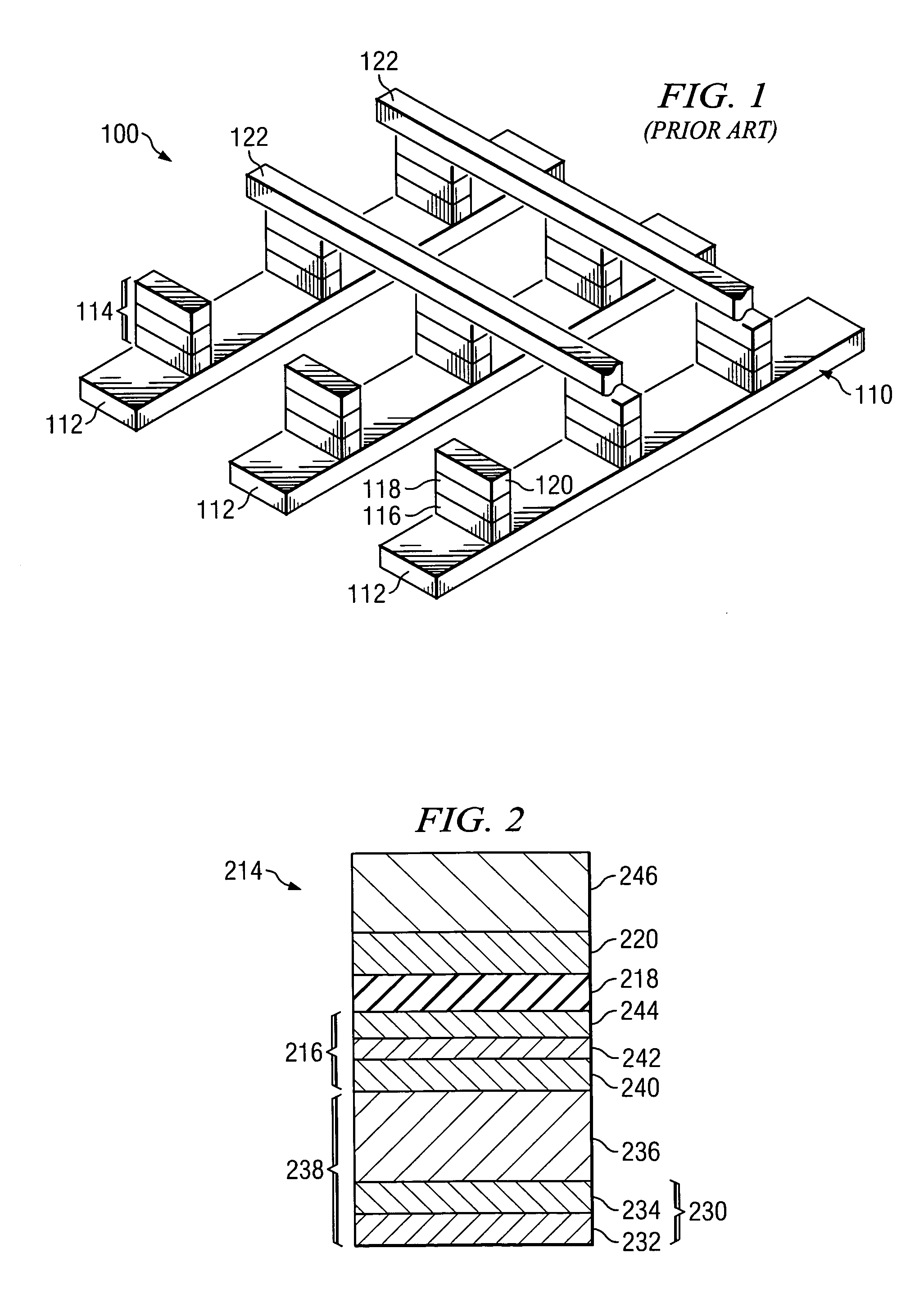MTJ stack with crystallization inhibiting layer
a technology of mtj stack and crystallization inhibiting layer, which is applied in the direction of digital storage, semiconductor devices, instruments, etc., to achieve the effects of improving coercitivity hc, cmos compatibility, and improving thermal stability
- Summary
- Abstract
- Description
- Claims
- Application Information
AI Technical Summary
Benefits of technology
Problems solved by technology
Method used
Image
Examples
Embodiment Construction
[0021]The making and using of the presently preferred embodiments are discussed in detail below. It should be appreciated, however, that the present invention provides many applicable inventive concepts that can be embodied in a wide variety of specific contexts. The specific embodiments discussed are merely illustrative of specific ways to make and use the invention, and do not limit the scope of the invention.
[0022]The present invention will be described with respect to preferred embodiments in a specific context, namely a magnetic stack implemented in an MRAM array. Embodiments of the present invention may also be applied, however, to other resistive memory device applications, magnetic memory cell designs, and magnetic semiconductor device applications, as examples. The present invention is particularly beneficial when implemented in the manufacture of FET and crosspoint MRAM arrays, as examples.
[0023]A prior art MRAM design structure will be described, followed by a discussion ...
PUM
 Login to View More
Login to View More Abstract
Description
Claims
Application Information
 Login to View More
Login to View More - R&D
- Intellectual Property
- Life Sciences
- Materials
- Tech Scout
- Unparalleled Data Quality
- Higher Quality Content
- 60% Fewer Hallucinations
Browse by: Latest US Patents, China's latest patents, Technical Efficacy Thesaurus, Application Domain, Technology Topic, Popular Technical Reports.
© 2025 PatSnap. All rights reserved.Legal|Privacy policy|Modern Slavery Act Transparency Statement|Sitemap|About US| Contact US: help@patsnap.com



